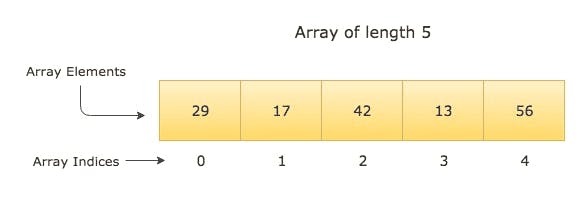Introduction
Data structures and algorithms are the backbones of computer science and programming. They are crucial for writing efficient and optimized code, which is a key requirement in technical interviews and real-world programming projects. Having a solid understanding of data structures and algorithms is essential for any programmer. In this blog, we will discuss the roadmap to data structures and algorithms, technical interview preparation strategies, previously asked questions, common mistakes to avoid, the time required for preparation, the weightage of each topic, and important resources to prepare them.
Roadmap to Data Structures and Algorithms
The first step towards learning data structures and algorithms is to have a strong foundation in programming languages such as Java, C++, Python, etc. Once you have a strong programming foundation, you can move on to the following topics:
Complexity Analysis: The first and foremost topic to start with is understanding the concept of time and space complexity analysis. You should know the Big O notation and how to analyze the worst-case, best-case, and average-case time complexity of an algorithm.

Arrays: Arrays are the simplest and most fundamental data structure in programming. You should know how to create and manipulate arrays and their various operations such as insertion, deletion, and searching.

Linked Lists: Linked lists are a linear data structure that consists of nodes that are linked together using pointers. You should know the different types of linked lists, such as singly linked lists, doubly linked lists, and circular linked lists, and their various operations such as insertion, deletion, and traversal.

Stacks and Queues: Stacks and queues are abstract data types that allow adding and removing elements from one end of the data structure. You should know how to implement stacks and queues using arrays and linked lists and their various operations such as push, pop, enqueue, and dequeue.

Trees and Binary Trees: Trees are hierarchical data structures that are widely used in programming. You should know the different types of trees, such as binary trees, binary search trees, and AVL trees, and their various operations such as insertion, deletion, and traversal.

Heaps: Heaps are a special type of tree-based data structure that is used to implement priority queues. You should know the different types of heaps, such as min heaps and max heaps, and their various operations such as insertion, deletion, and heapify.
Graphs: Graphs are non-linear data structures that consist of nodes and edges. You should know the different types of graphs, such as directed graphs, undirected graphs, and weighted graphs, and their various operations such as traversal, shortest path, and minimum spanning tree.

Sorting Algorithms: Sorting algorithms are used to arrange elements in a specific order. You should know the different types of sorting algorithms, such as bubble sort, insertion sort, selection sort, merge sort, quicksort, and their time complexity.
Technical Interview Preparation Strategies
"It's not necessarily the amount of time you spend at practice that counts; it's what you put into the practice." - Eric Lindros
Practice, Practice, Practice: The key to success in technical interviews is practice. You should practice solving as many problems as possible from online coding platforms such as LeetCode, HackerRank, and Codeforces.
Understand the Problem: Before starting to solve a problem, make sure you have a clear understanding of the problem statement and constraints.
Analyze the Complexity: After understanding the problem, analyze its time and space complexity to come up with an efficient algorithm.
Write Pseudo Code: Before starting to code, write pseudo code to organize your thoughts and develop a clear plan.
Test Your Code: After coding, test your code on different test cases to make sure it is working correctly.
Previously Asked Questions
During technical interviews, interviewers usually ask questions related to the topics mentioned above. Here are some examples of previously asked questions:
Implement a binary search algorithm.
Reverse a linked list in-place.
Find the kth largest element in an array.
Implement a depth-first search (DFS) algorithm for a graph.
Sort an array using the merge sort algorithm.
Common Mistakes to Avoid
Not understanding the problem statement and constraints properly.
Not analyzing the time and space complexity of the algorithm.
Jumping straight into coding without writing pseudo-code and planning the solution.
Not testing the code on different test cases.
Over-complicating the solution.
Time Required for Preparation
The time required for preparation depends on your previous experience and the amount of time you can dedicate to learning. However, on average, it takes around 3-6 months of consistent practice to become proficient in data structures and algorithms.
Weightage of Each Topic
The weightage of each topic may vary depending on the company and the job position. However, in general, the following topics have a higher weightage in technical interviews:
Arrays
Linked Lists
Stacks and Queues
Trees and Binary Trees
Sorting Algorithms
Graphs
Important Resources to Prepare
"Cracking the Coding Interview" by Gayle Laakmann McDowell is a popular book that covers data structures and algorithms and contains hundreds of practice problems with detailed solutions.
LeetCode, HackerRank, and Codeforces are popular online coding platforms that provide a wide range of problems to practice.
GeeksforGeeks and Coding Ninjas are online platforms that offer comprehensive tutorials and practice problems on data structures and algorithms.
Algorithms, Part I and Algorithms, and Part II courses on Coursera by Robert Sedgewick and Kevin Wayne are excellent resources to learn data structures and algorithms.
Conclusion
Data structures and algorithms are essential for any programmer, and having a solid understanding of them is crucial for technical interviews and real-world programming projects. The roadmap to data structures and algorithms includes a strong programming foundation and topics such as complexity analysis, arrays, linked lists, stacks, queues, trees, heaps, graphs, and sorting algorithms. The key to success in technical interviews is practice, and it is essential to understand the problem, analyze complexity, plan the solution, write pseudo-code, and test the code. By avoiding common mistakes and using the right resources, you can become proficient in data structures and algorithms and ace technical interviews.

